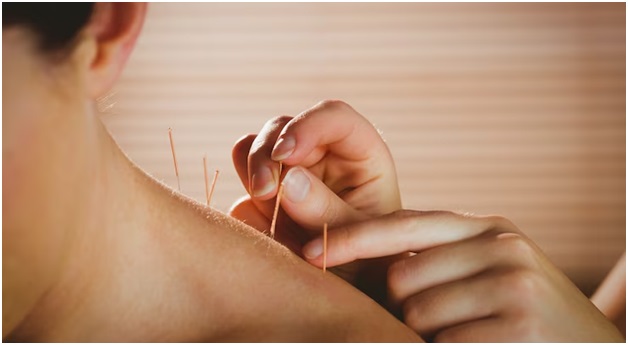Dry needling physiotherapy is a minimally invasive form of physical therapy that employs thin needles to target trigger points—sensitive areas of muscle tissue. It aims to alleviate pain and enhance range of motion. This treatment has gained popularity for its effectiveness in addressing various musculoskeletal conditions, including back pain, neck pain, shoulder injuries, knee problems, and headaches. Unlike conventional approaches involving drugs or surgery, dry needling offers a drug-free and surgery-free alternative. In this article, we will delve into the world of dry-needling physiotherapy, shedding light on its mechanisms and potential benefits.
Benefits of Dry Needling Physio
Dry needling physio involves the use of thin needles to target areas experiencing pain or tension. This relatively recent treatment method has gained traction due to its effectiveness in addressing musculoskeletal issues. By reducing muscle spasms, improving mobility, and alleviating pain, dry needling physio stands out among treatment options.
One major advantage lies in its precision in targeting specific muscles and trigger points. Trigger points, areas within muscles that tighten and cause pain under pressure, can be effectively released through dry needling. This release not only alleviates pain but also restores normal movement patterns in the affected area.
Additionally, dry-needling physiotherapy enhances circulation in targeted areas by stimulating blood flow. The increased circulation brings oxygen-rich blood to muscles, reducing inflammation, swelling, stiffness, and pain. This process promotes faster healing compared to traditional methods like rest or stretching alone. Moreover, the therapy contributes to lengthening tight muscles and tendons, improving overall flexibility and range of motion.
Types of Dry Needling Techniques Used in Physiotherapy
Dry needling is a technique gaining popularity among physiotherapists for treating musculoskeletal and neuromuscular disorders. It involves the insertion of thin needles into trigger points causing pain or dysfunction. Common types include intramuscular stimulation (IMS), traditional Chinese medicine (TCM) acupuncture, and trigger point therapy. IMS targets muscle tension by inserting needles into specific motor points, stimulating the nervous system to reduce pain and improve mobility. TCM acupuncture, though different in principles from IMS, similarly involves inserting needles to influence energy flow for pain relief. Trigger point therapy focuses on specific tender areas within muscles, addressing them through dry-needling techniques.
Risks and Side Effects of Dry Needling
While dry needling effectively treats muscle pain and dysfunction, it is crucial to be aware of associated risks and side effects. Soreness or tenderness at needle insertion sites is common, lasting a few hours to a couple of days. Bruising may occur but usually resolves without medical intervention. Serious side effects such as pneumothorax, nerve damage, increased pain, or infection spread are rare but possible with improper technique or underlying health conditions.

Preparation for a Dry Needling Session
Proper preparation is essential for a successful dry-needling session. Consult with your doctor or physical therapist to determine if dry needling is appropriate for your health condition. Wear comfortable clothing allowing easy needle access, and avoid jewelry that may interfere with the process.
What to Expect During a Dry Needling Session
Before a dry needling session, your physical therapist will assess muscle tension and trigger points. Thin needles will then be inserted into targeted areas at varying depths, aiming to stimulate and relieve discomfort. Mild discomfort may occur during insertion, but pain should be minimal.
Follow-Up Care After a Dry Needling Treatment
Following a dry needling session, soreness may occur, subsiding within 24 hours. Avoid strenuous activities immediately post-treatment and consult your healthcare provider if discomfort persists. Regular stretching and light physical activity can promote healing.
Conclusion
In conclusion, dry needling physiotherapy offers an effective, drug-free, and surgery-free alternative for various conditions. Its ability to reduce pain, improve range of motion, and accelerate healing makes it a valuable treatment option. Administered by experienced physiotherapists, dry-needling physio stands out as a safe and beneficial choice for those seeking long-term relief and improved mobility.

